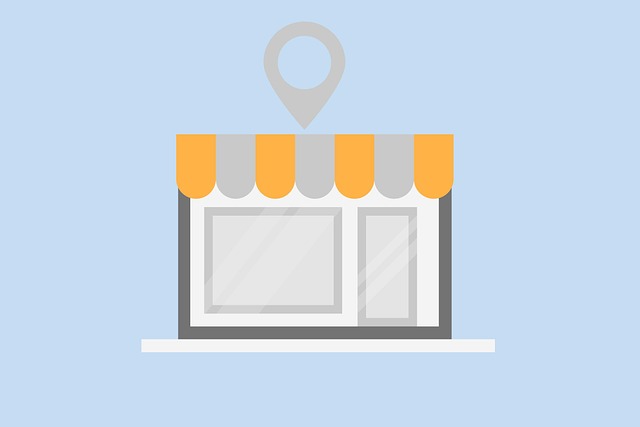An e-commerce website design that excels prioritizes user experience, combining aesthetics with functionality. Key elements include intuitive navigation, visually appealing product presentations, and responsive design for all devices. Effective features like personalized recommendations, secure payment gateways, and streamlined checkout processes enhance customer confidence and conversions. Strategic marketing integration, SEO optimization, and robust analytics track performance and drive success in the competitive online marketplace.
In today’s digital landscape, a full-featured e-commerce website is essential for any business aiming to thrive online. This comprehensive guide delves into the key components that transform a simple online store into a robust e-commerce hub. From understanding the core features to optimizing for mobile and integrating secure payment gateways, we explore every aspect of successful e-commerce website design. Discover how user experience (UX) considerations, effective product page layouts, marketing tools, and analytics drive sales and elevate your brand in the competitive e-commerce space.
Understanding Full-Featured E-commerce Websites

A full-featured e-commerce website is a robust online platform designed to facilitate seamless shopping experiences for customers while empowering businesses with advanced tools for managing their sales and operations. These websites go beyond basic functionalities, incorporating features like secure payment gateways, inventory management systems, customer relationship management (CRM) tools, and analytics dashboards. They offer a comprehensive solution that allows businesses to create, manage, and grow their online stores effectively.
Ecommerce website design plays a pivotal role in the success of these platforms. A well-designed e-commerce site must be user-friendly, visually appealing, and optimized for various devices to ensure high conversion rates. Key elements include intuitive navigation, high-quality product visuals, engaging content, and a simple checkout process. Additionally, robust features such as personalized recommendations, customer reviews, and live chat support enhance the overall shopping experience, fostering customer trust and loyalty.
Key Components of a Successful E-commerce Website Design

A successful ecommerce website design is more than just an attractive storefront; it’s a seamless blend of aesthetics, functionality, and user experience (UX). Key components include intuitive navigation that allows customers to easily browse products, filter options, and search functions. High-quality visuals, optimized for both desktop and mobile devices, are crucial in engaging users and conveying product value. Clear product descriptions, including detailed specifications and customer reviews, build trust and encourage conversions.
Effective call-to-actions (CTAs) guide users through the purchasing process, whether it’s “Add to Cart,” “Buy Now,” or “View Details.” Secure payment gateways and multiple payment options ensure convenience and foster confidence in making online transactions. Additionally, a responsive design that adapts to various screen sizes, fast loading times, and easy checkout processes are essential for retaining visitors and promoting sales in today’s competitive ecommerce landscape.
User Experience (UX) Considerations for Online Stores

A well-designed user experience (UX) is pivotal for the success of any full-featured e-commerce website. It encourages visitors to navigate seamlessly, browse products effortlessly, and ultimately make purchases. E-commerce website design should prioritize simplicity and intuitiveness, ensuring fast loading times, responsive layouts that adapt to various devices, and a clear, consistent layout throughout the site. Incorporating intuitive search functions, filtering options, and easily accessible product details can significantly enhance UX.
User interactions, such as adding items to a cart, checking out, and managing accounts, should be streamlined and free from friction. Clear call-to-action buttons, progress indicators during checkout, and secure payment gateways contribute to a positive UX, fostering customer trust and satisfaction. Regular usability testing and gathering user feedback are essential practices to identify and address any UX bottlenecks, ensuring the e-commerce website remains competitive in an increasingly digital landscape.
Optimizing for Mobile: Importance and Strategies

In today’s digital era, optimizing for mobile is no longer an option but a necessity for full-featured e-commerce websites. With the majority of internet users accessing sites via smartphones and tablets, mobile-first design has become the de facto standard. Ecommerce website design that prioritizes speed, usability, and visual appeal on smaller screens can significantly enhance user engagement and drive conversions. Mobile optimization strategies include compressing images, leveraging responsive design techniques, simplifying navigation menus, and ensuring seamless checkout processes across all devices.
Implementing these tactics not only improves the overall user experience but also positively impacts search engine rankings. Google, for instance, favors mobile-friendly sites in its search results, making mobile optimization a crucial component of any successful ecommerce strategy. By embracing mobile-centric design principles, businesses can tap into a vast audience, foster brand loyalty, and ultimately boost their online sales.
Integrating Secure Payment Gateways

When designing a full-featured e-commerce website, integrating secure payment gateways is paramount for fostering customer trust and ensuring seamless transactions. A robust online store should support multiple payment options, from credit cards to digital wallets, catering to diverse consumer preferences. This flexibility enhances user experience, increases conversion rates, and positions your ecommerce website as a modern, reliable platform.
Secure payment gateway integration involves implementing encryption protocols, fraud detection systems, and real-time transaction monitoring. These features safeguard sensitive financial data, reducing the risk of cyber threats and enhancing customer confidence in their online purchases. A well-designed ecommerce website balances functionality with security, providing customers with peace of mind during every step of the buying process.
Effective Product Page Layouts and Content

An effective product page layout is essential for any successful e-commerce website design. It should be visually appealing, easy to navigate, and optimized for quick purchasing decisions. The layout should prominently feature high-quality product images from multiple angles, enabling customers to have a clear understanding of what they’re buying. User-friendly filters and sorting options, as well as detailed product descriptions that include relevant keywords, can significantly enhance the browsing experience.
Content is king in e-commerce, and compelling product pages should offer more than just specifications. Incorporate customer reviews, testimonials, and ratings to build trust and confidence. Highlight unique selling points and benefits using concise bullet points or short paragraphs. Additionally, ensure that the page loads quickly and displays seamlessly across all devices, as mobile optimization is crucial for modern e-commerce websites.
Leveraging Marketing Tools and SEO for E-commerce Websites

In the competitive landscape of e-commerce, effective marketing strategies are essential for driving traffic and boosting sales. Leveraging integrated marketing tools within your website design is a game-changer. These tools allow for dynamic content delivery, personalized user experiences, and precise targeting of potential customers. By integrating email marketing, social media feeds, and analytics dashboards, an ecommerce website can create a seamless customer journey, from initial engagement to final purchase.
Search Engine Optimization (SEO) plays a pivotal role in making your e-commerce website visible to the right audience. Optimizing product pages with relevant keywords, crafting compelling meta descriptions, and ensuring fast loading times are fundamental practices. Additionally, creating high-quality content, like blog posts or tutorials, that addresses customer queries can significantly enhance your site’s organic search rankings. This, in turn, increases visibility and drives qualified leads, ultimately contributing to the overall success of the ecommerce website design.
Analytics and Performance Tracking for E-commerce Success

For e-commerce businesses, understanding customer behavior and market trends is key to success. Analytics and performance tracking are indispensable tools in this regard, offering valuable insights into how your online store performs and where improvements can be made. By integrating robust analytics platforms, you gain access to real-time data on website traffic, conversion rates, customer demographics, and product popularity. This data allows for data-driven decisions, optimizing your ecommerce website design to enhance user experience and drive sales.
Effective tracking enables you to identify bottlenecks in the buying process, whether it’s high bounce rates on certain pages or specific products with low conversion rates. Armed with this knowledge, you can make strategic changes to layout, content, and functionality, ensuring your ecommerce website is not just attracting visitors but converting them into paying customers. Regular analysis of performance data also helps in staying ahead of the competition by adapting quickly to market shifts and consumer preferences.
